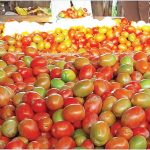Heart bypass surgery, also known as coronary artery bypass grafting (CABG), is a significant surgical procedure that restores blood flow to the heart by bypassing blocked coronary arteries. During this surgery, surgeons use veins or arteries from other parts of the body, such as the saphenous vein or the internal mammary artery, to create new routes for blood flow. The procedure helps relieve symptoms like chest pain and shortness of breath caused by restricted blood flow. CABG can be performed as either an “on-pump” or “off-pump” procedure, depending on whether the heart is stopped during surgery. Dr. Farooq Ahmad Ganie, Associate Professor, Department of Cardiovascular Thoracic Surgery, SKIMS Srinagar in an interview with Rising Kashmir’s Senior Health Correspondent, M Peerzada, talks about procedures, symptoms and the latest advancements in treatment of heart bypass surgery.
1: What is heart bypass surgery?
Heart bypass surgery which is also known as coronary artery bypass grafting (cabg), coronary artery bypass grafting (cabg) is a major surgical operation where blockages in a patient’s coronary arteries are bypassed with harvested venous or arterial conduits.
The bypass restores blood flow to the ischemic myocardium which, in turn, restores function, viability, and relieves anginal symptoms. The most commonly performed major surgical procedure in cardiac surgery.
In general, on-pump and off-pump are the 2 types of cabg surgical procedures with the difference being the use of a cardiopulmonary bypass circuit and an arrested heart to operate during an on-pump cabg. The conduits used as bypass grafts are routinely the left internal mammary artery (lima) and the saphenous vein grafts (svg) out of the lower extremities.
Other conduits that may be grafted include the right internal mammary artery (rima), the radial artery, and the gastroepiploic artery. The type and location of the grafts depend on the patient’s anatomy and the location of the arteries that are occluded.
2: What are the most common symptoms that indicate a patient might need heart bypass surgery?
· Chest pain caused by the heart, can feel like pressure, squeezing, tightness, or burning,
· Shortness of breath especially with your routine activity.
· Palpitations
· Cold sweats
· Dizziness
· Swelling in the hands and feet
· Light-headedness.
· Fatigue (severe tiredness)
· Nausea or a feeling of indigestion.
· Neck pain.
3: How does coronary artery disease progress to the point where bypass surgery becomes necessary?
The heart is supplied by 2 major coronary arteries: the left main coronary artery and the right coronary artery (rca). The left main coronary artery is usually a short segment that branches into the left anterior descending (lad) artery and the circumflex artery.
The lad branches further into diagonal branches and the circumflex artery branches into obtuse marginal branches. The rca branches into the posterior descending artery (pda) and the marginal branches
Cabg is generally recommended when there are high-grade blockages in any of the major coronary arteries and/or percutaneous coronary intervention (pci) has failed to clear the blockages. The bypass surgery becomes necessary if there is:
· Left main artery has a blockage of more than 50%
· Three-vessel disease: a stenosis of more than 70% in three coronary arteries
· Two-vessel disease: a stenosis of more than 70% in two coronary arteries, with one of them being the proximal left anterior descending (lad) artery
· Anginal symptoms: significant anginal symptoms that do not respond to medical therapy
· Post-infarction complications: emergency cabg for complications like ventricular septal rupture, acute mitral insufficiency, or free wall rupture
Failed percutaneous coronary intervention ( pci): emergency cabg if substantial myocardium or hemodynamic stability is at risk
Cardiogenic shock: emergency cabg for cabg amenable lesions, regardless of the time of onset
One vessel disease greater than 70% in a survivor of sudden cardiac death with ischemia-related ventricular tachycardia
4: Can you explain different types of heart bypass surgeries and how you decide which one is best for a particular patient?
There are multiple types of bypass surgery, which includes:
Single, double, triple, or quadruple bypass: the type of bypass surgery performed depends on how many coronary arteries are blocked:
Single bypass: one artery is blocked
Double bypass: two arteries are blocked
Triple bypass: three arteries are blocked
Quadruple bypass: four arteries are blocked
Depending on this, we offer the bypass surgery.
5: What advancements in heart bypass surgery techniques have you seen in recent years ,such as minimally invasive methods?
While the traditional open arrested heart approach to bypass surgery is still widely used and preferred in many situations, less invasive techniques have been developed to bypass blocked coronary arteries. For instance, other types of surgical bypass procedures include:
· Off-pump bypass surgery – performed without stopping the heart
· Keyhole bypass surgery – performed through several small incisions
· Robotic bypass surgery – performed with the assistance of a highly precise mechanical device
· Hybrid coronary revascularization – performed as a hybrid procedure to stent some blockages and bypass others
6: What are the key risk and potential complications associated with heart bypass surgery?
The complications of cabg include stroke, wound infection, graft failure, renal failure, and death. The stroke rate of cabg has been reported at 1% to 2% depending on the characteristics of the patient and their risk factors for stroke including advanced age, prior stroke, aortic atherosclerosis, peripheral arterial disease, perioperative atrial fibrillation, and diabetes.
Sternal wound infection rates are about 1% and are dependent on risk factors such as obesity, diabetes, chronic obstructive pulmonary disease (copd), and prolonged duration of surgery.
Postoperative renal dysfunction rates after cabg range from 2% to 3%, with 1% requiring dialysis. Risk factors are multifactorial but include preoperative renal disease, advanced age, diabetes, type of surgery, lv dysfunction, and shock. No medications have been definitively shown to reduce the rates of cabg-induced renal dysfunction, but there may be an advantage of off-pump cabg over on-pump cabg.
Atrial fibrillation (severe palpitations) within the first 5 days after cabg is relatively common with rates of 20% to 50% and is associated with increased morbidity with a higher risk of embolic stroke postoperatively as well as increased mortality. The risk of perioperative death after cabg is dependent on co-morbidities, the urgency of the surgery, and the case-volume of the center where the operation takes place, ranging from 1% to 2%.
7: How does recovery from heart bypass surgery typically progress and what factors can influence a faster or slower recovery?
After a heart bypass, you will stay in the hospital for about 1 week. You may stay longer if you had other procedures done as well, or if you have a complication. You will stay in an intensive care unit (icu) for a day or two.
8: What lifestyle changes should patients make after heart bypass surgery to ensure long term heart health?
Lifestyle changes, including regular exercise, following a heart-healthy diet, quitting smoking and avoiding secondhand smoke, and addressing depression and other psychosocial modulators of behavior, provide independent and additive benefits to patients with heart bypass surgery, adjunctive lifestyle modification in the setting of established coronary heart disease, guidelines for coronary patients from the American Heart Association (AHA) and the American College of Cardiology Foundation (ACCF) identify “lifestyle modification” as a class 1b recommendation for blood pressure control, physical activity, and lipid/lipoprotein, weight and diabetes management.
Accordingly, post–myocardial infarction (mi) patients who reported adherence to just 3 healthy lifestyle habits at 30 days post–hospital discharge—smoking cessation, regular exercise, and healthy eating—demonstrated a 3.8-fold decreased risk of death, re-infarction, and stroke after 6 months as compared with those who adhered to none of these behaviors.
9: How do you address concerns patients may have about undergoing such a major surgical procedure, especially for older individuals?
Patients may have many concerns about surgery, including: pain relief, physiological changes, length of stay, and psychological preparation. Anxiety is a common issue for patients before surgery, and can negatively impact their recovery. The successful surgeon must take into account patient concerns and specific risk factors that may impact outcomes.
These details are then weighed in the balance of risks versus benefits to determine if surgery represents a reasonable option. Arguably, we are very good at this aspect of patient selection, and some would consider this to be the only criteria necessary in deciding who is or is not a candidate for surgery.
Factors that may influence results include the severity of the underlying condition, prior treatments to the operative site, or comorbid conditions and medications impacting healing.
Similarly, several conditions may increase the likelihood for peri-operative complications including blood thinning medications (or the holding of the medications), comorbid diseases (in particular cardiac, pulmonary, vascular, or diabetes), living conditions, recreational smoking, drug, or alcohol use.
Although many of these conditions increase the possibility of complications, they should not automatically exclude a patient from undergoing surgery. Rather, they should factor into an analysis weighing the risks and benefits of surgery.
As an example, a man with uncontrolled dm wishing to undergo heart bypass surgery may be excluded by a surgeon until he achieves a lower hba1c level.
This may be done due to concerns over an increased risk for wound infection, delayed healing however, in many cases, patients may never be able to achieve normal hba1c levels due to various reasons.
Rather than exclude the patient from surgery lifelong, it may be more reasonable to counsel the patient that his rate of infection may be higher than compared to someone without diabetes or with controlled diabetes and then allow him to make the decision. As such, the astute surgeon recognizes that the risks and sequelae with non-treatment are 100% compared to a potential small increased risk of infection.
One of the most important aspects of patient selection is accurately identifying the patient’s goals, objectives, and expectations of treatment.
Although some patients have previously decided on a treatment course prior to office evaluation, many are seeking the surgeon’s recommendations on which therapy would be most likely to address their underlying concern.
Appropriate patient selection is therefore dependent on obtaining a thorough history and fully understanding which specific issue he is hoping to treat.
Potential surgical patients must also have the psychological capacity to handle all potential postoperative scenarios. Although most patients may experience a good outcome, complications will invariably occur.
If a patient does not have the psychological reserve or ability to cope with a significant complication, he is a poor surgical candidate similarly patient expectations must be within the ability of the surgeon and the surgical procedure to address. A patient with unreasonable expectations cannot be satisfied, even in the setting of a good postoperative result.
From a practical standpoint, it is often difficult to identify which patients do and do not have sufficient reserve to handle complications, particularly in referral or busy surgical practices, where clinicians may need to decide on surgery after a single OPD visit.








